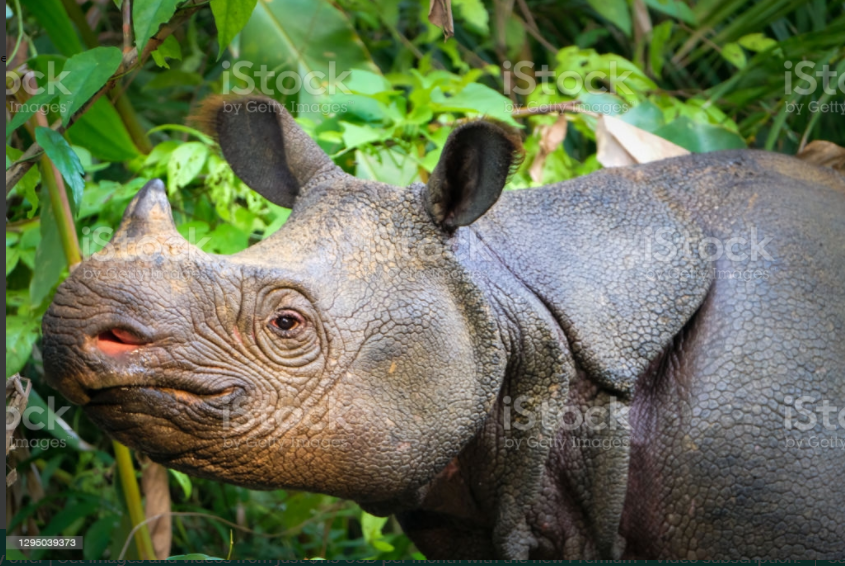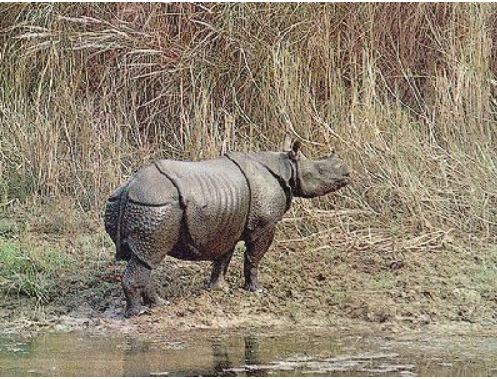An endangered animal is any species of animal that is at risk of becoming extinct shortly due to either predation, poaching, or adverse change in climate in the motherland of the animal. On the other hand, wildlife trading is selling either dead or alive animals or even their products such as rhino horn, elephant’s ivory, and tiger bone, among others. The world’s most endangered animals include the Javan rhino, Vaquita, mountain gorillas, and Asian elephants. In this project, I will focus on Javan rhinos as the topmost endangered and traded animal worldly. Out of the five rhino species, Javan rhinoceros is the most threatened species despite being in the ecosystem for millions of years, playing a crucial role in shaping the landscape by its feeding style. Many people depend on the natural resource provided in their habitat, such as benefiting people who do business earning income when tourists visit the area (Wilson et al., 2020). Poachers remove their tiny horns, which have high value in China since it is used as a source of medicine. The above explanation made me draw all my attention and interest to that specific species of rhino.
It is also called Sunda rhinoceros or lesser one-horned rhinoceros, and it is a sporadic member of the Rhinocerotidae family. It belongs to the same genus, with Indian rhinoceros having similar mosaic and armor-like skin being dusk grey in color. It is 3.1-3.2 meters in length, while its height ranges from 1.4-1.7 meters. Its horn is slightly shorter than 25cm, making it have the shortest horns of all other species. The horns belong only to adult males since the females lack them. The weight of it is as much as 2.3 tones. It has a life span of between 30 to 40 years, with the female having earlier sexual maturity of 5-6 years than the male, which matures at ten years. They were widespread in southeast Asia, while today, they are located in Ujung Kulon National Park in Java and Cat Tien National Park in Vietnam. They inhabit dense lowland rainforests with an adequate water supply; many muds wallows, salt licks, and very tall grass. Being browsers, they eat shoots, twigs, young foliage, and several grass species.
The Ujung Kulon National Park monitoring programmers perform analysis to identify the population structure of Javan rhino from 2011 to 2019. In 2012 there were a total of 35 inclusive of both the young and the adults. The population size in 2013 was a minimum of 58, with 8 of them being calves and the rest adults and sub-adults. The birth rate was 13.79%, and the mortality rate was 3.45%. The population decreased to 10.34% after the death of two rhinos in 2015. After the death of one of the males named Samson in 2018, only a population of 58 to 68 remained. The current population in Ujung National Park has been estimated to be 74. This is an apparent cause of alarm to this species as they are at risk of getting extinct (Harjanto & Mentari, 2019). Its decline is due to various factors such as poachers, diseases, loss of habitat due to the aggressive Vietnam war, adverse climate change, and inbreeding depression due to genetic diversity loss.
The high value it has to people has made it remain topmost endangered primarily due to poaching. Due to the high value of their horns, poachers have hunted them to get the horns and sell them to China at a very high price (Harrington & Gerber, 2020). The Chinese use the horns as traditional Chinese medicine. Trophy hunting is another cause of threat to them, and this is due to the increase of European presence at the ranch. Law enforcement agencies have failed to patrol parts of the park strictly, and this has given giving poachers enough time to escape with the high-valued horns. Rangers charged with patrolling are neither accused nor held accountable when any rhinos are found killed. Habitat loss is another cause of endangerment. This has been caused mainly by people who clear habitats for the animal to settle or practice agriculture, making the rhinos vacate to areas with high chances of vulnerable attacks or even areas with hostile habitat conditions. Natural factors such as tsunamis in Ujung National Park have also endangered this species by drowning them. Another factor is an explosion of a volcano near Anak Krakatau, which can cause catastrophe to the species in the national park (Andre et al., 2018). The disease is another serious threat to them, as four Javan rhinos have died due to diseases transmitted by wild cattle.
To save them from extinction, security is crucial in ensuring that both the national park and the rhino are safe. World Wildlife fund should be in the first line by strictly providing that the national park is well fenced correctly to ensure the Javan rhinos do not escape. To achieve this, law enforcement should be at the forefront of monitoring the entire national park. Anything strange should be reported so that immediate action may be taken. They are to be held accountable for any missing species. Strict measures should be taken against those who don’t adhere to their duties, such as failing to patrol. Frequent data about the number available in the park should be taken to monitor all the species effectively and be in a position to know when one goes missing. Poachers should be punished when caught within the act according to the law without failure. Expanding the protected areas by building new ones or connecting the isolated ones can also save their life of them. They are creating awareness for people to realize the importance of protecting wildlife by reporting immediately when they see someone escaping instead of killing or harassing it because doing so is illegal and a sign of cruelty. Reports about any ailing or missing rhino should be communicated to Save the Rhino International Organization at +44(0)2073577474 or email them through [email protected].
People should protect wildlife habitat by not cutting down trees and vegetation, which is a food source for the wildlife. They need to have food, water, and habitat where they can comfortably raise their young ones. Habitat destruction is a way of endangering the few Javan rhinoceros remaining. Products resulting from endangered species such as the horns should not be purchased but instead reported those engaging in such illegal business. If everyone keenly follows the above instruction, then the Javan rhino will no longer be endangered, and there will be a drastic increase in their number.
Pictures of java rhino


Javen rhinos are important species playing a vital role in the ecosystem because they are grazers that help maintain the shape of the landscape, hence making other animals have a healthy balance. It is, therefore, the role of everyone to protect this helpful creature by knowing if eradicated, there is going to be a massive problem to the other animals and even to people who depend on natural resources within the habitats of the rhinos. From the knowledge that the species is an endangered animal, people should team up with both the law enforcement team and the world wildlife organization to ensure that extinction does not occur. This will entail creating awareness on the importance of Javan Rhino, taking strict measures against those violating the set laws on protecting it. Those caught with their product should face the direction and the law enforcement officers who allow the poaching to occur by not answering their call of duty.
Government and other non-governmental organizations should help fund rhino organizations to ensure that there are enough funds to cater for their treatment, enlarging their habitats, and anything that will require finance in the protection of the Javan Rhino. Inbreeding depression should be carefully be controlled to reduce their mortality rate. All factors increasing the death rate of the species in question should be controlled, such as treating the sick ones, ensuring that the habitat is located in an area free from flooding and volcano eruption, and the predators. If all the above measures are going to be maintained, then there is no doubt that the birth rate will increase shortly, increasing their numbers.
References
Andre, G. A., Khairani, K. O., Mahmud, R., & Lukitaningsih, D. (2018). PF-2 Water Buffalo (Bubalus bubalis) Disease Surveillance in the Area Adjacents to the Ujung Kulon National Park as the Habitat for the Javan Rhinoceroses (Rhinoceros sondaicus). Hemera Zoa.
Harjanto, E., & Mentari, R. (2019). On competition between Javan rhino (Rhinoceros sondaicus) and Javan bull (Bos javanicus) at Ujung Kulon National Park with allee effect. Biomathematical Sciences, 2(1), 47-54.
Harrington, E. R., & Gerber, B. D. (2020). THE MYSTERIOUS CASE OF THE DISAPPEARING JAVAN RHINO: USING CLUES FROM RHINOS’EVERYDAY HABITS AND HOBBIES TO FIGURE OUT HOW TO HELP THEM RECOVER. People and Wildlife, 47.
Wilson, S. G., Hockings, G., Deretic, J. A. M., & Kark, S. (2020). More than just mud: the importance of wallows to Javan rhino ecology and behavior. Pachyderm, 61, 49-62.